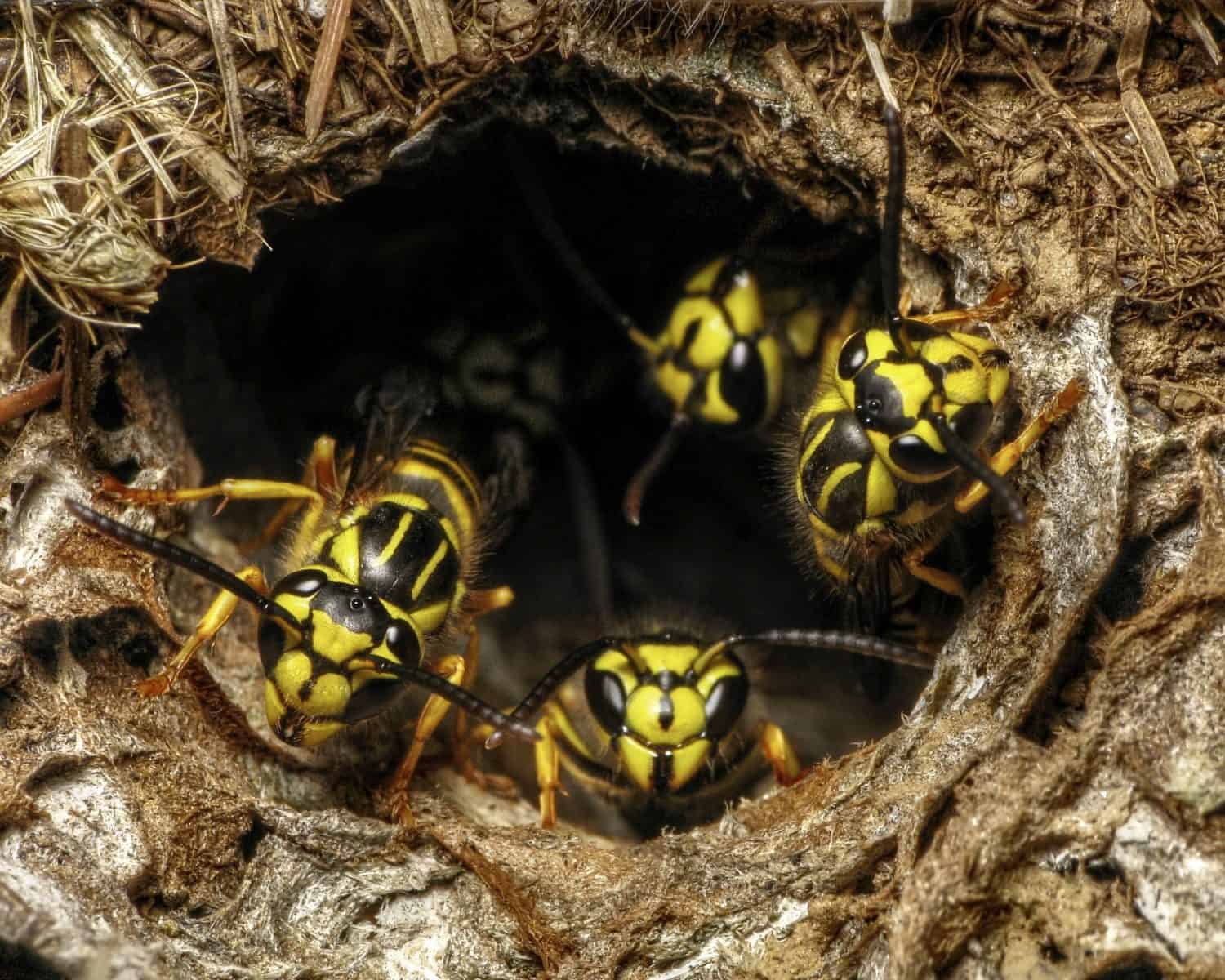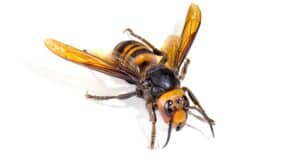Aggressive and Armed with a Sharp Stinger, Yellow Jackets Got to Go!
First off, let’s make sure to properly identify yellow jackets. With the dangers facing honeybee populations worldwide, its important to be sure what stung you before waging war! One of the best telltale signs to distinguish a yellow jacket from a honeybee is their segmented body. While a honeybee has a fuzzy, fully connected thorax and abdomen, a yellow jacket sports a hairless thorax with a tiny waist! Another huge indicator of what’s just stung you is whether it survives the sting! Honeybees have a barbed stinger which rips out, staying in the victim and killing the bee! Whereas yellow jackets have a less barbed stinger which can slide back out and sting again!
Before we dive fully into this removal process, we need to be sure to take safety precautions! Depending on the method of removal best suited for your situation, certain extra precautions may be a good idea. Considering yellow jackets build nests in a variety of places, the strategy for removing a tree nest wouldn’t be as effective on a ground nest. Regardless, there are a few precautions that apply to all of these methods! Interacting with yellow jackets is always potentially dangerous!
Use Extreme Caution Whenever Removing Yellowjackets!
Yellow jackets have painful stings, one of which is likely why you’re hoping to remove them! But these painful stings are not to be taken lightly! Yellow jacket, wasp and bee stings can cause anaphylactic shock, being potentially deadly! So to ensure the best chances of avoiding this outcome, covering as much skin as possible is the name of the game!
Wear long sleeves, gloves, thick pants, and tough boots that are all tucked into one another, lessening the chances of being stung. Of course, without a beekeeper’s suit, there’s always still a chance you’ll be stung! But these precautions will do well to help lower the number of stings to as low as possible!
‘Trapped & Zapped!’ – Using Conventional Traps That They Can’t Escape!

In this cone style trap, the wasps enter via a small opening, from which they cannot return. Once trapped inside, they starve to death without being able to pose a threat to anyone else!
©TayaJohnston/Shutterstock.com
It may be the case that you can’t actually locate the hive, but are dealing with yellow jackets nonetheless! In these situations, the reasoning for them being around are likely identifiable. Yellow jackets survive off of protein, rather than the sugar-centered diet of bees. If a clear source of protein can be found, like exposed food waste or a high concentration of insects, you’ve found your culprit! Removing these sources of protein will also remove the yellowjackets, but in some cases that’s simply not possible! In that case, set up a conventional trap that lures yellow jackets in with an additional piece of protein! These types of traps are built so that the yellow jackets can enter, but once inside can never escape! Whether drowning, being crushed or simply starving to death the yellowjackets caught in these traps are finished!
‘Bowls Are Full!’ – Placing Bowls Over the Nest Entrances!

When yellow jackets build their nest underground, a simple solution is to simply close off the openings.
©Sean McVey/Shutterstock.com
For those who can’t bring themselves to actively kill yellow jackets, or even set up a lethal trap, this is the pacifist option for you! Another method to be used for ground nests, simply finding the entrances and covering them all to trap the yellow jackets inside! When doing this method, make sure the edges of the bowls are tightly sealed against the ground and heavy enough to not be moved by a gust of wind! Additionally, this method is only recommended for situations where small children or animals will be in the area! Using glass bowls allows you to keep an eye on how well the trap is working, watching as the yellow jackets try to escape! Okay, it might not be exactly pacifist, but yellow jackets sometimes choose the wrong place for a nest!
‘A Hint of Mint!’ – Use All Natural Peppermint Oil to Peacefully Evict the Yellow Jackets!

Yellow jackets absolutely hate peppermint oil! Applying it to a yellow jacket nest repeatedly will eventually dissuade the yellow jackets from their chosen spot!
©Tatevosian Yana/Shutterstock.com
For those max-level peaceful souls out there who couldn’t even simply trap the yellow jackets, don’t think it’s hopeless! Yellow jackets have a secret vendetta against peppermint, and the smell of the stuff sends them packing! So by using a bit of peppermint oil, any die-hard nature lovers can peacefully evict their yellow jackets! Combine just a few drops of pure peppermint oil, a few tablespoons of dish soap and warm water in a spray bottle. Waiting until night, when yellow jackets are the least active, spray the mixture around and inside the nest openings. This method must be repeated over the course of numerous days, diligently. Just one spray won’t dissuade the yellow jackets enough to jump ship and move, but consistent spraying will!
The photo featured at the top of this post is © Daniel Loya/Shutterstock.com
Thank you for reading! Have some feedback for us? Contact the AZ Animals editorial team.






